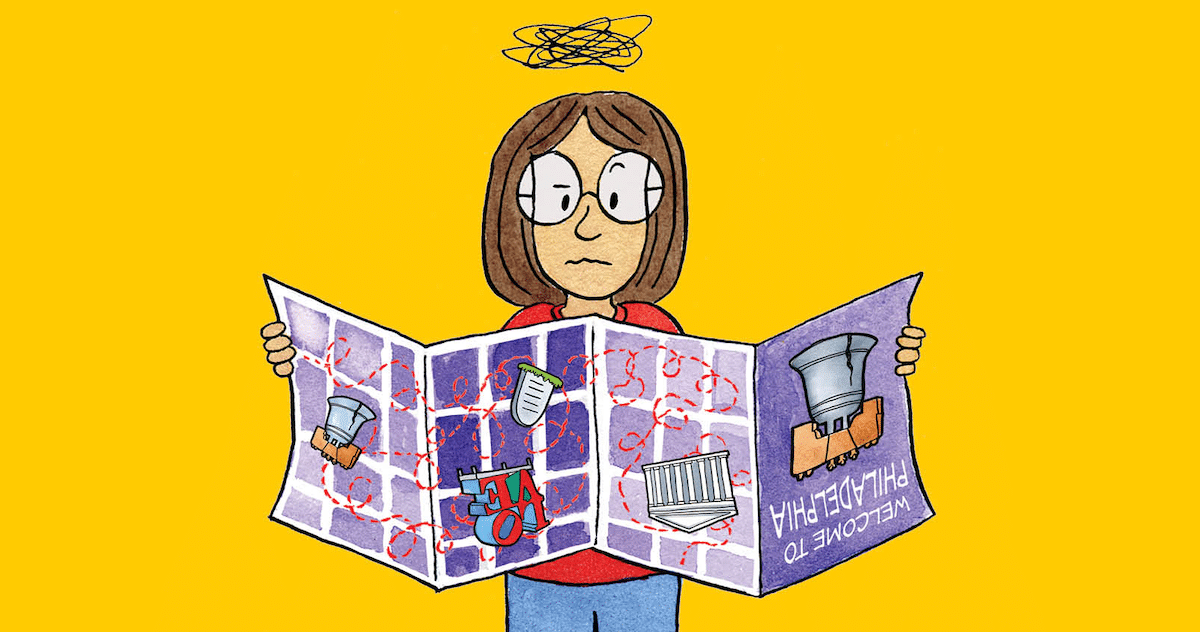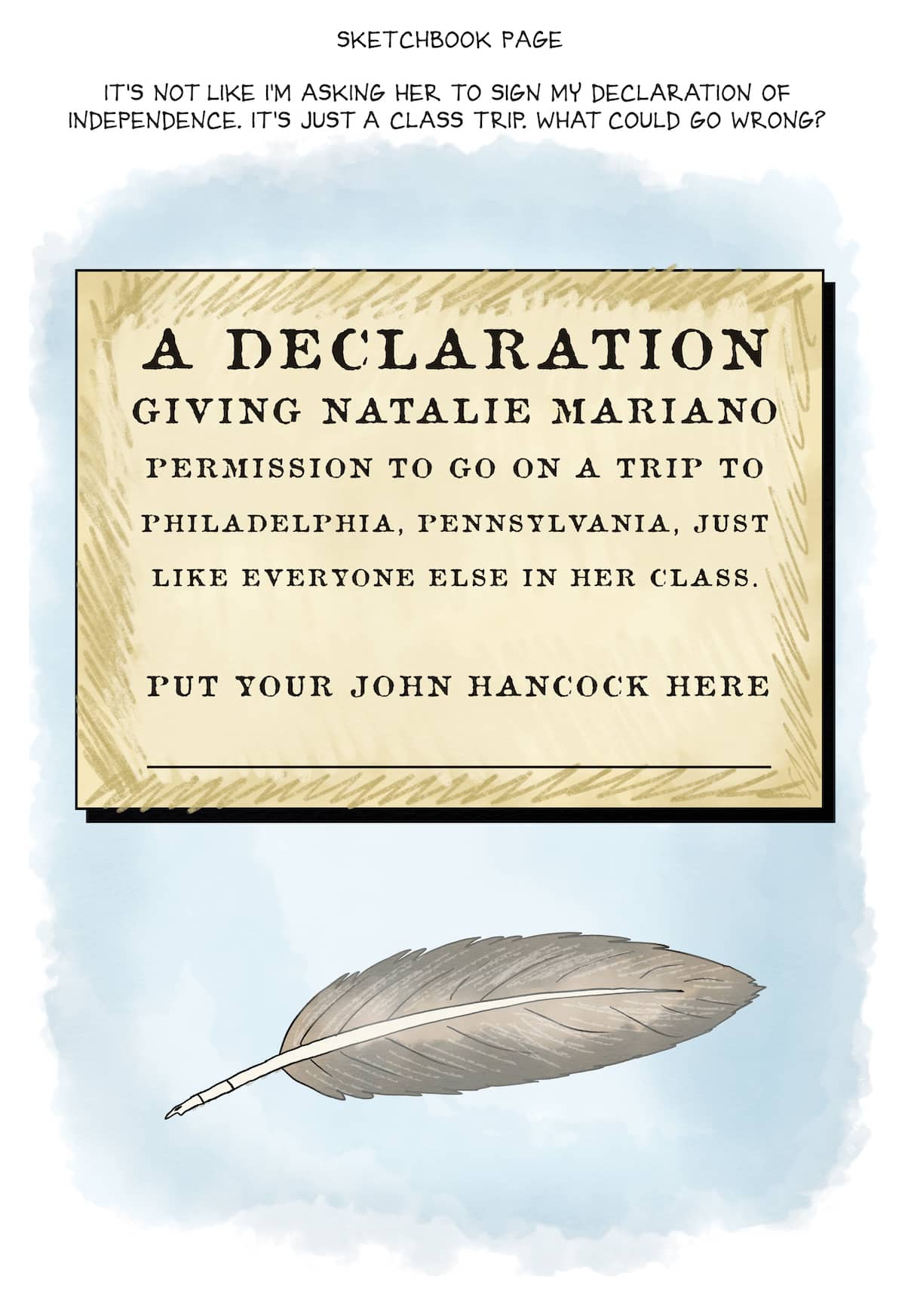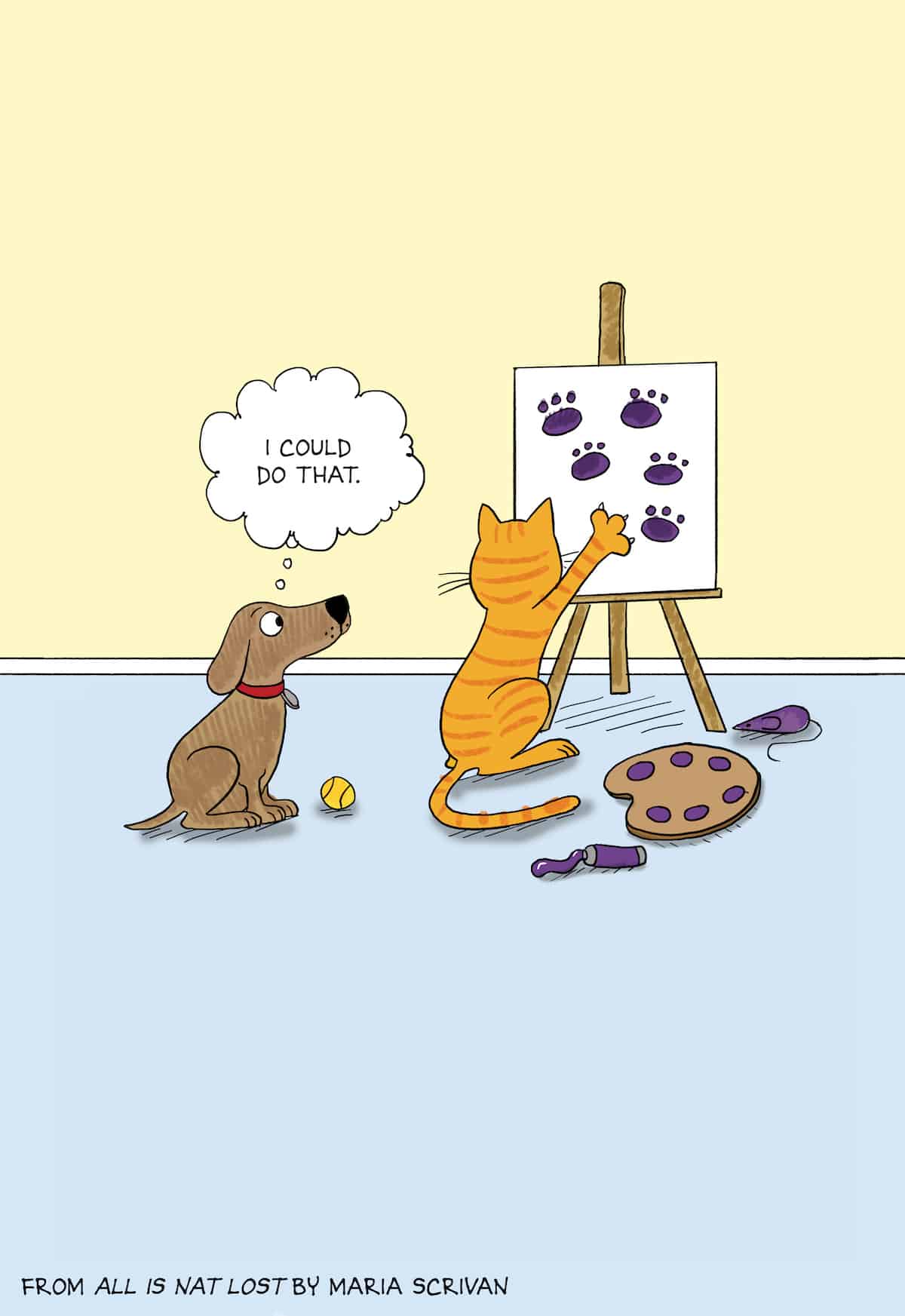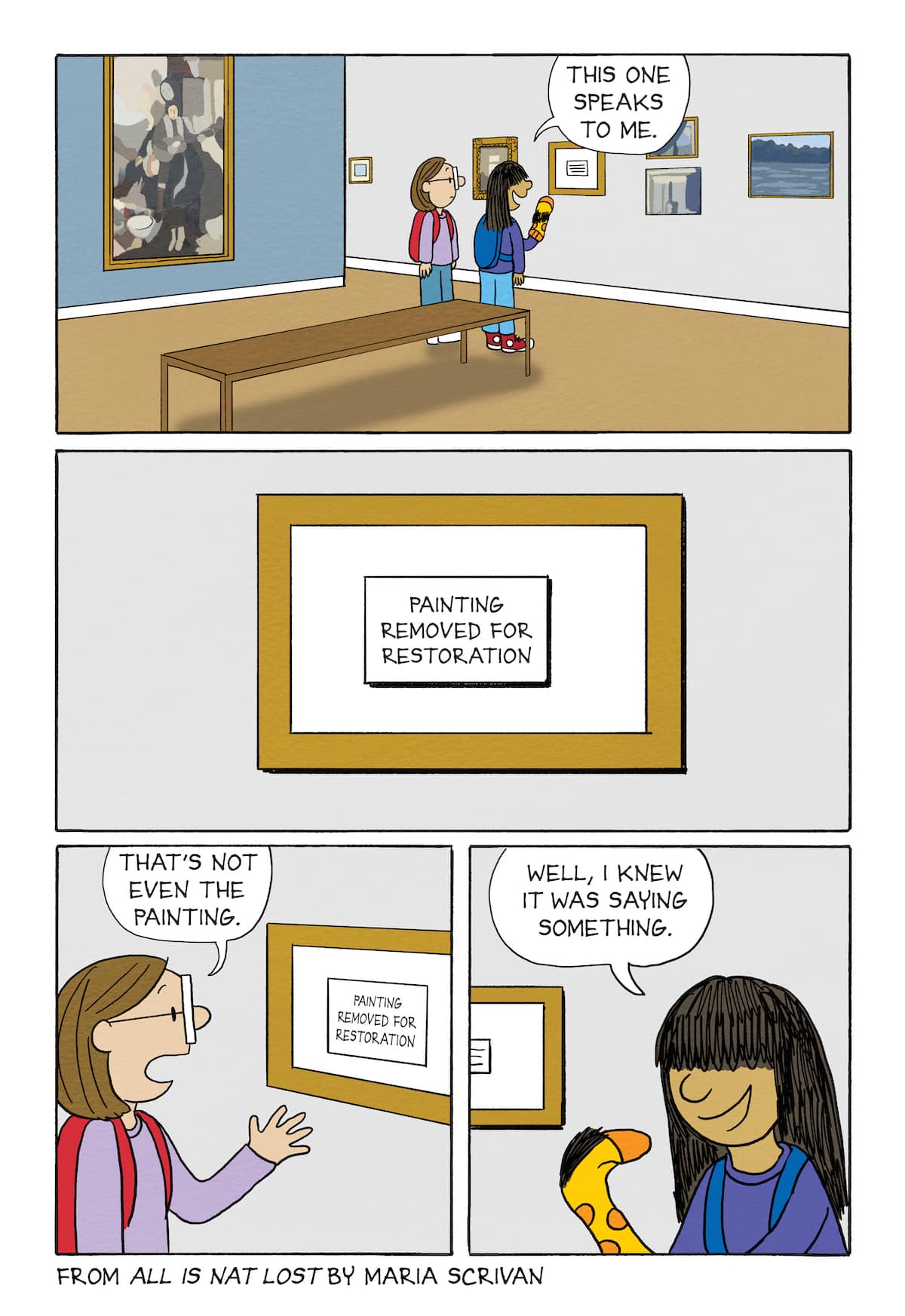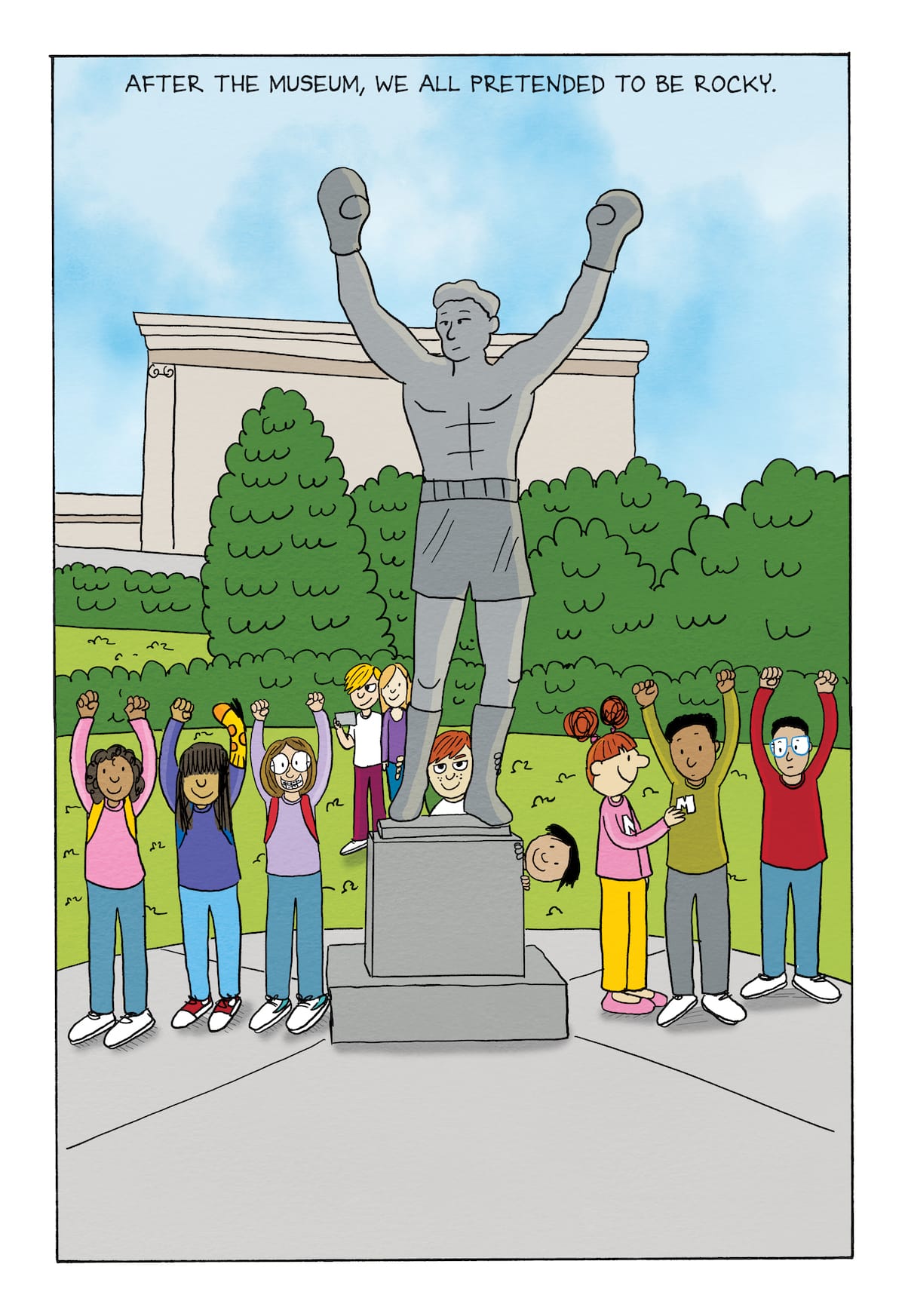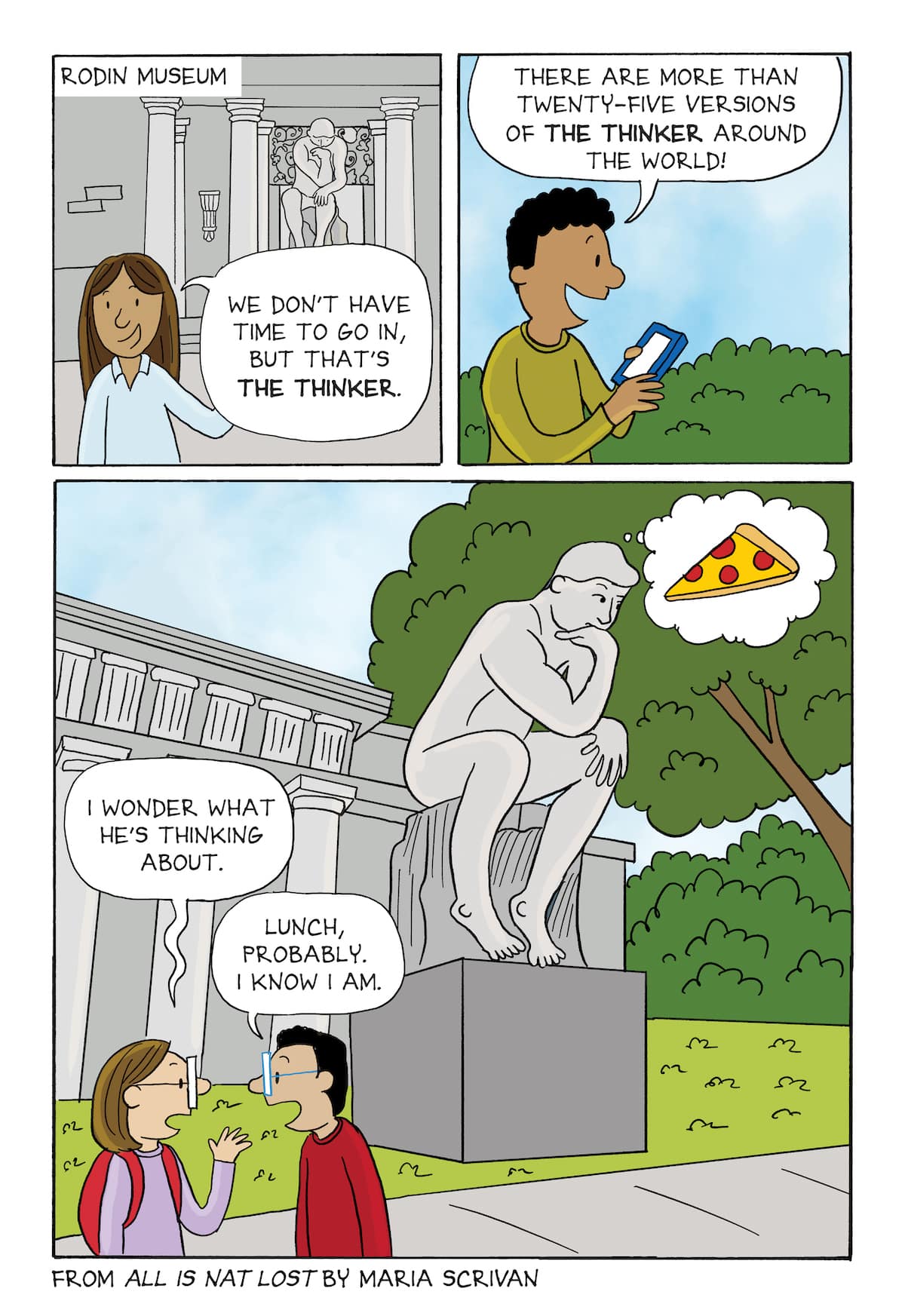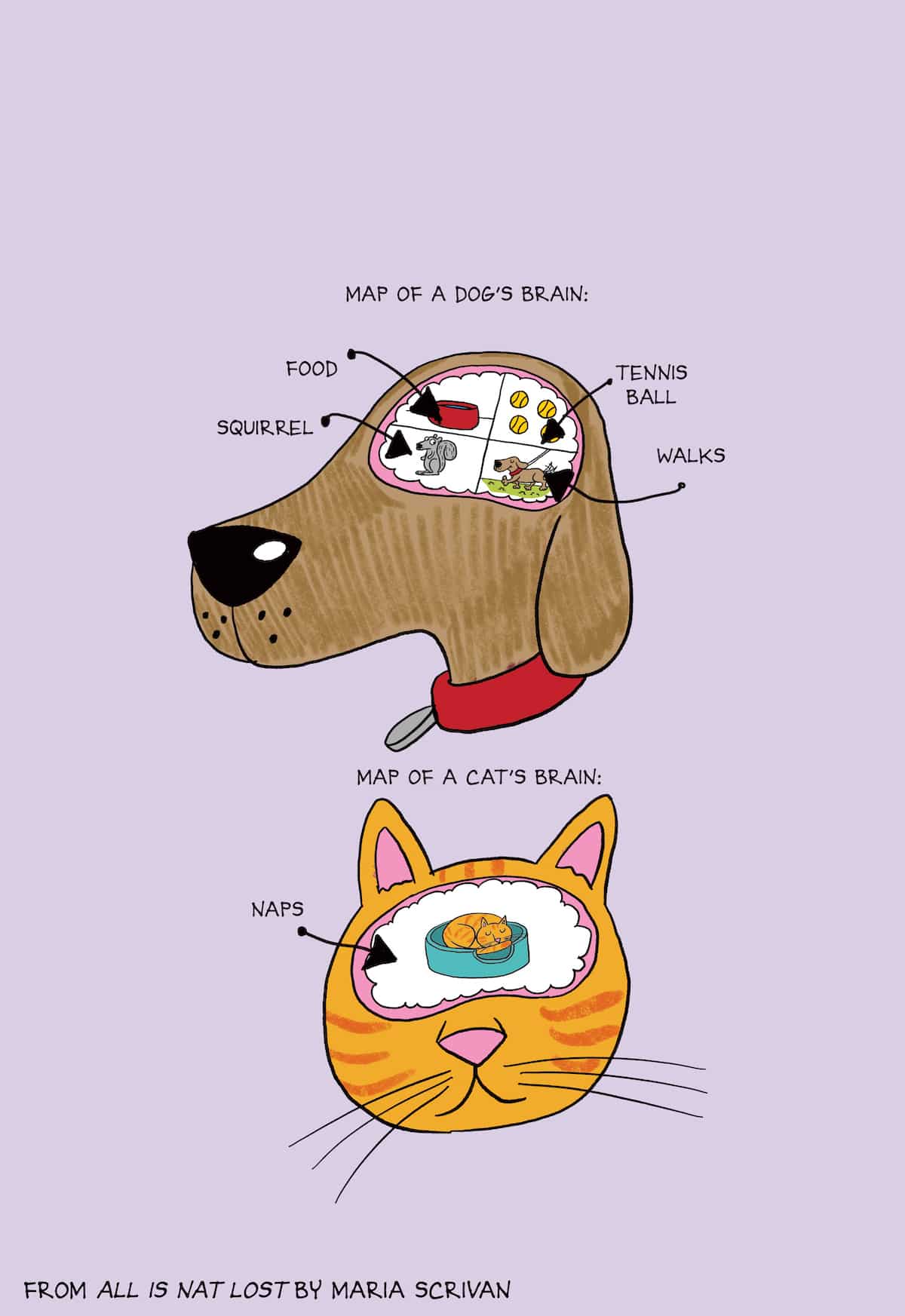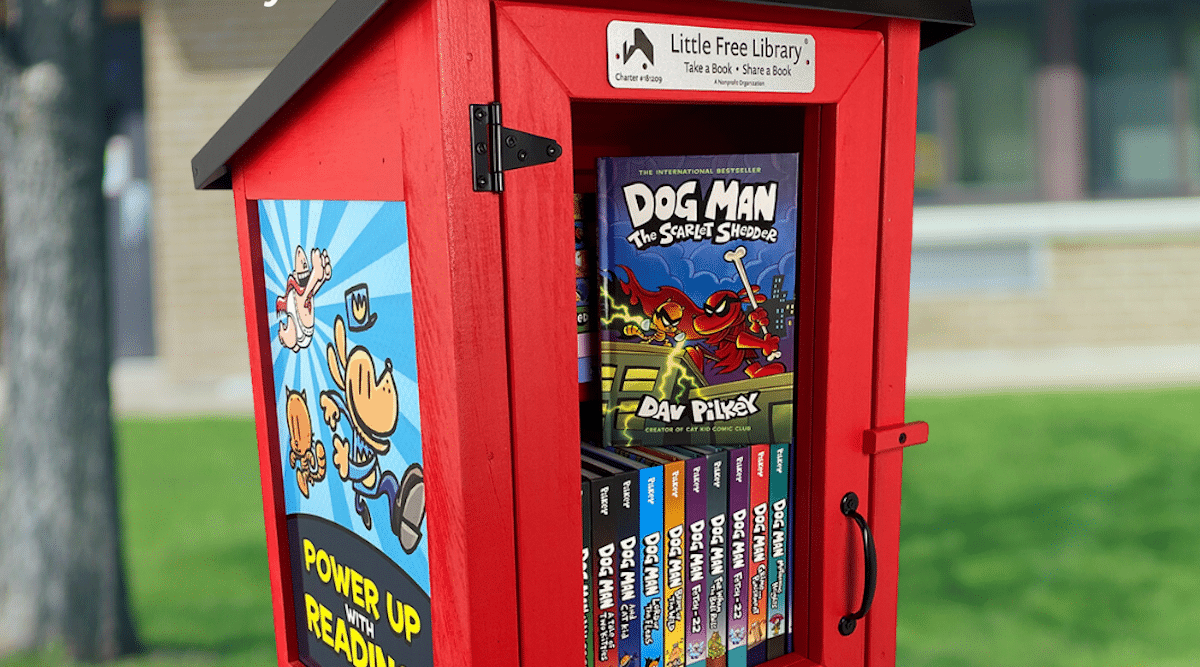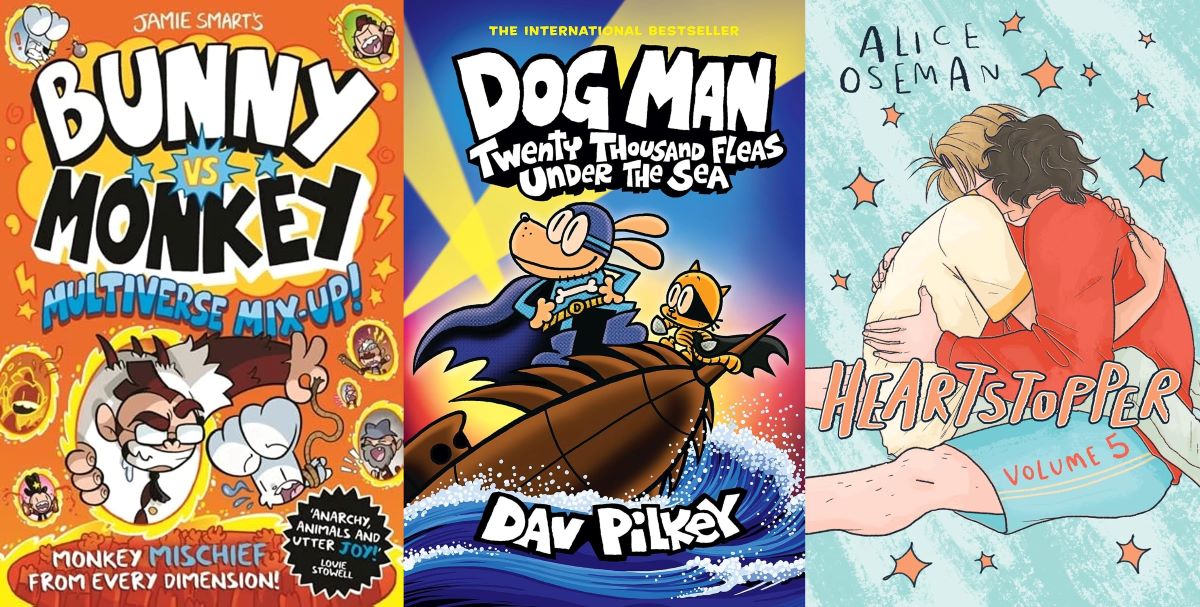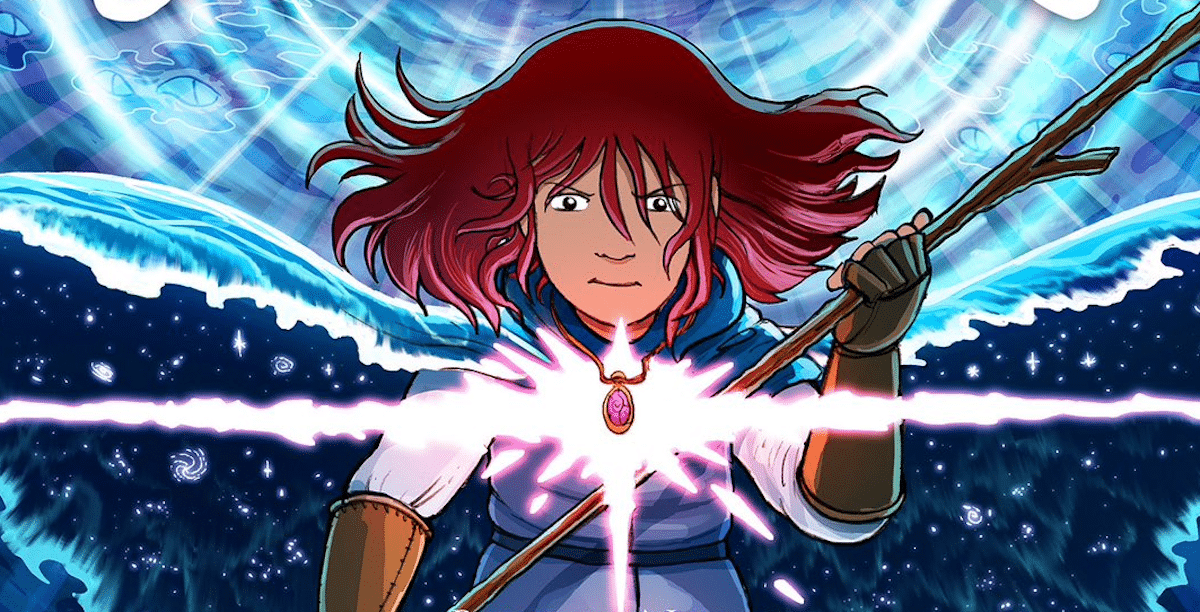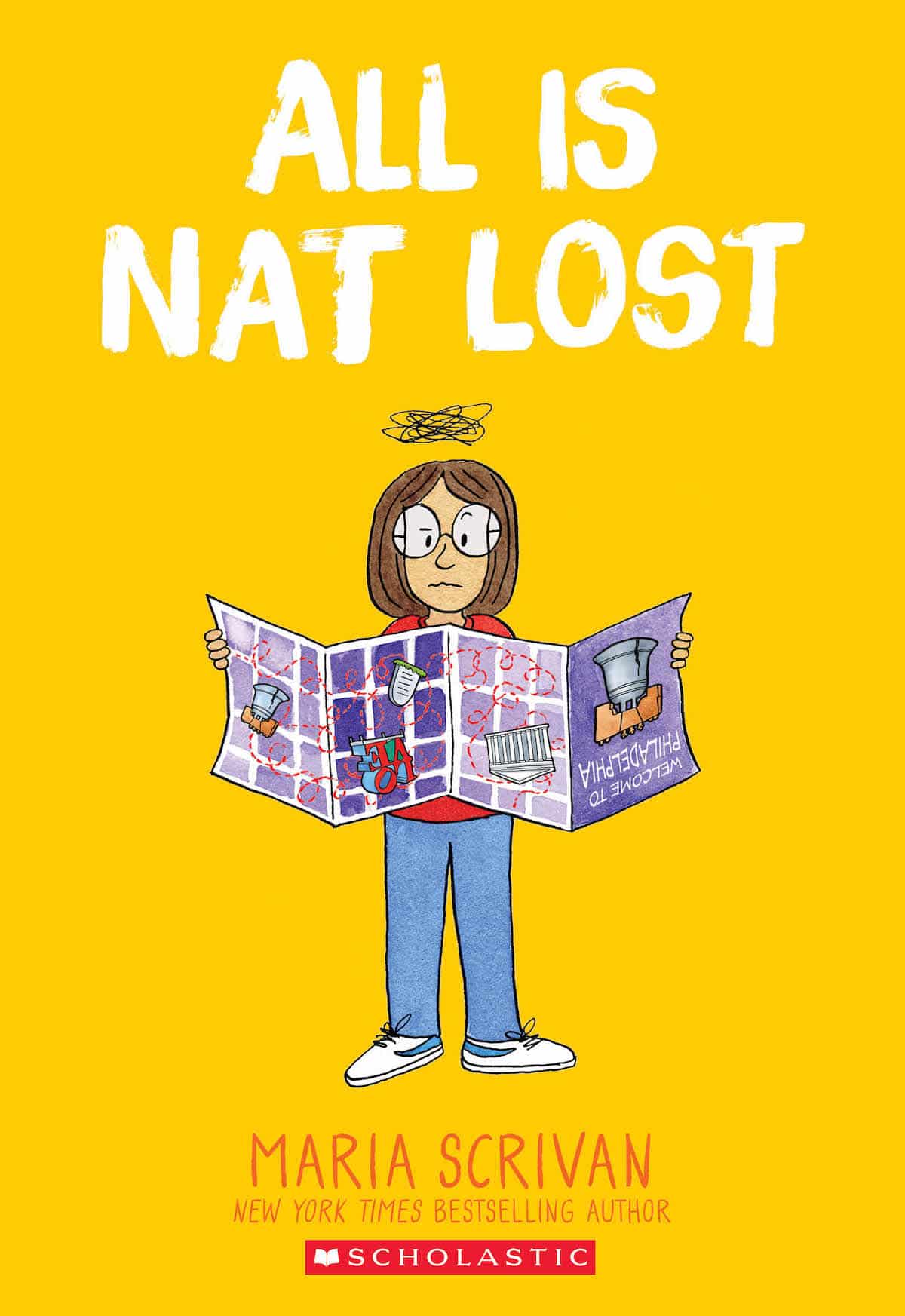
Comics Beat caught up with Scrivan over email to learn more about All Is Nat Lost. We asked all about researching Philadelphia, about whether or not she cracks herself up during the cartooning process, and about how working on a graphic novel differs from working on a daily comic strip and other graphic narrative formats!
AVERY KAPLAN: What was the genesis of All Is Nat Lost? Why did you choose Philadelphia for the class trip destination?
MARIA SCRIVAN: I love travel, and I knew that All is Nat Lost was going to be about a class trip. I considered many places that I have visited but as the story developed, I realized it had to be Philadelphia, because the theme of the book is about Nat making her declaration of independence.
While I was working on the book, I found a photo of myself around Nat’s age, standing next to the Liberty Bell, which validated my decision, and ended up in the back of the book.
KAPLAN: Can you tell our readers about the “class trip” you took while working on All Is Nat Lost?
SCRIVAN: I took my own trip to Philadelphia to research the book, and on the same day I was there, there were about a hundred class trips happening at the same time, so I put myself on one. I followed a group into Independence Hall, where I met a great teacher who told me all about their trip, and that they were doing a scavenger hunt. That, along with my own childhood experiences, informed so many ideas for the book.
I love Philadelphia and had so much fun exploring the city through Nat’s lens. I went to the Philadelphia Museum of Art, and the Rocky Sculpture where you can watch people flexing all day long. I walked past the Thinker, wondering what Nat would think he was thinking, and had a great time exploring the Mütter museum and talking to their staff. I stood in a very long line to see the Liberty Bell, and visited Washington Square Park, Independence Hall, Elfreth’s Alley, the Betsy Ross House, and Christ Church, taking notes and sketching as I went along.
KAPLAN: All Is Nat Lost is filled with interesting facts and information about Philadelphia. Is there any particular fact that is your favorite? Did you learn anything surprising while researching for this book? (I learned about the Liberty Bell misspelling from reading it!)
SCRIVAN: I learned so much researching this book! I didn’t know about the Liberty Bell misspelling either. Too bad they didn’t have autocorrect back then (although I spend most of my day correcting autocorrect). I also had no idea that there are 25 of Rodin’s, “The Thinker” around the world. Probably the most surprising fact I discovered is that Philadelphia cream cheese is actually from New York.
KAPLAN: Like the books in the series that preceded it, All Is Nat Lost is laugh-out-loud funny. What’s your joke writing process like? Have you ever cracked yourself up from drawing a panel or writing a punchline?
SCRIVAN: I crack myself up constantly. I have no idea where these ideas come from, and they are a surprise and a delight when they show up on the page.
The books usually inform the jokes, and they develop organically during the writing process. Many jokes don’t make it into the book and I’ve learned, after six books, that the story is more important than the joke, no matter how much I like it.
For the comic, I sit down with my sketchbook and brainstorm ideas. I’ll come up with 25 or so, and pick out 7. Sometimes, they need to marinate for a while, and other times I will notice two seemingly unrelated thoughts sitting next to each other in my sketchbook and that forms the joke.
I also spend a lot of time imagining what my dog would say if he could talk, and that ends up both in my comic and in the opening page of every chapter of every book in a panel comic featuring the characters Cat and Treat.
I love writing comics in coffee shops and diners, and do a lot of book writing while I’m walking in the woods, speaking into the notes section of my phone using dictation.
I had a great poetry professor in college who told us that taking a walk, going for a bike ride, or getting in a car or train always helps get ideas moving. If I’m really stuck, I’ll just start doodling. I used to think I was wasting time when I was procrastidoodling, procrastibaking, or procrastigardening, but they are all part of my creative process.
KAPLAN: As a cartoonist, you’ve worked in various graphic narrative formats, including graphic novels, daily funnies and magazine comics (please let me know if I’ve missed any). What’s it like to create comics in so many different formats? Does one inform the other? Does any format come more naturally to you than the others?
SCRIVAN: I also design greeting cards. All of the comics, regardless of format, originate from the same place…from deep in my subconscious, deep in my heart, or both.
Nat Enough was my first long-form sequential comic, and a writer friend pointed out that I was creating an entire narrative in a single panel with my daily comic, and that really helped me embrace this new format.
No matter the medium, all of the comics go through many iterations, and many drafts. So many pages never see the light of day, but that is part of the process, and each piece of writing, and each drawing, informs the next, whether it is published or not.
KAPLAN: This is the fifth book in the Nat series. What kind of reactions have you received from young fans of the books?
SCRIVAN: The books are based on real feelings and experiences from my childhood. Although our environments and technology have changed, the feelings of not being enough, not fitting in, and self-doubt are evergreen. So often we feel like we are the only person in the world having an experience, only to discover, by reading someone else’s story, that we are not alone in our feelings.
Graphic novels evoke an entirely new level of visual empathy by revealing the most subtle nuances of expression, body language, and mood. As creators, we can add so many layers of depth to the story with color, layout, pacing and so many other tools. As a visual learner, graphic novels are my most natural form of communication, and give me so many opportunities to add humor to the story.
I’ve always loved comic strips, and gravitate toward simplicity in my art and dialog which makes the books accessible to young readers. I’ve heard many times that my book is the first book a reader has read cover to cover. Finishing a 235-page book makes them feel successful, and ignites a love of reading.
Readers have told me that the Nat series are comfort books, and that they read them whenever they feel sad or alone. Many parents have told me that the books have helped their children move through anxiety. So much of the books are me working through my own anxieties and insecurities from that age, and the fact that they’re helping kids feel confident means the world to me.
KAPLAN: Can you give us a hint about what’s next for you, and for Nat?
SCRIVAN: I’m just wrapping up the sixth book in the series, Nat a Chance. Nat is constantly tripping over her own two feet, always getting picked last for gym, and is sure she is not an athlete. After a series of unfortunate events, Nat pushes herself out of her comfort zone and agrees to trains for a triathlon with her best friend, Zoe.
Nat a Chance is an exploration of the stories we tell ourselves about our capabilities, and what happens when we move past our limiting beliefs.
Growing up, I felt just like Nat, but came to realize that the idea of not being athletic was a story I kept telling myself that wasn’t true. When we say things about ourselves often enough, they go from being a thought to a belief, and then our reality. We can tell ourselves a better story, and once we crumple the old scripts of what’s possible, we open the door to even more impossible things.
For me, the mental discipline of training for long distance triathlons far exceeded the benefits of physical training, and was instrumental in preparing me to create graphic novels. Both long- distance triathlons, and graphic novels were seemingly impossible goals, and are accomplished, one step at a time, and one page at a time, until I get to the finish line.
Nat a Chance will be available in 2025, and I can Nat wait for her adventures to continue!
KAPLAN: Is there anything else you’d like me to include?
SCRIVAN: I recently had the opportunity to speak at Cos Cob School, the elementary school that I attended when I was Nat’s age. I was thrilled to tell the students that was where I wrote and illustrated my first book, when I was in sixth grade, thanks to an amazing teacher who taught us how to make our own books. She also encouraged us to enter a book contest, which set me on the path of wanting to be an author. The making of that book, and the book contest are an integral part of Nat Enough.
While I was there, the current librarian showed me a special display in the library for student- published work. Kids create their own graphic novels, she assembles them into a book, laminates them, and makes them available for other students to check out from the library.
The authors are so proud to see their work on display, and their friends are so excited to check them out of the library. I thought this was such a great way to inspire kids to write and draw their own stories, and to encourage them to keep creating.
All stories are valid, important, necessary, and deserve to be shared.
All Is Nat Lost and the previous books in the Nat series are available at a local bookstore and/or public library near you.


